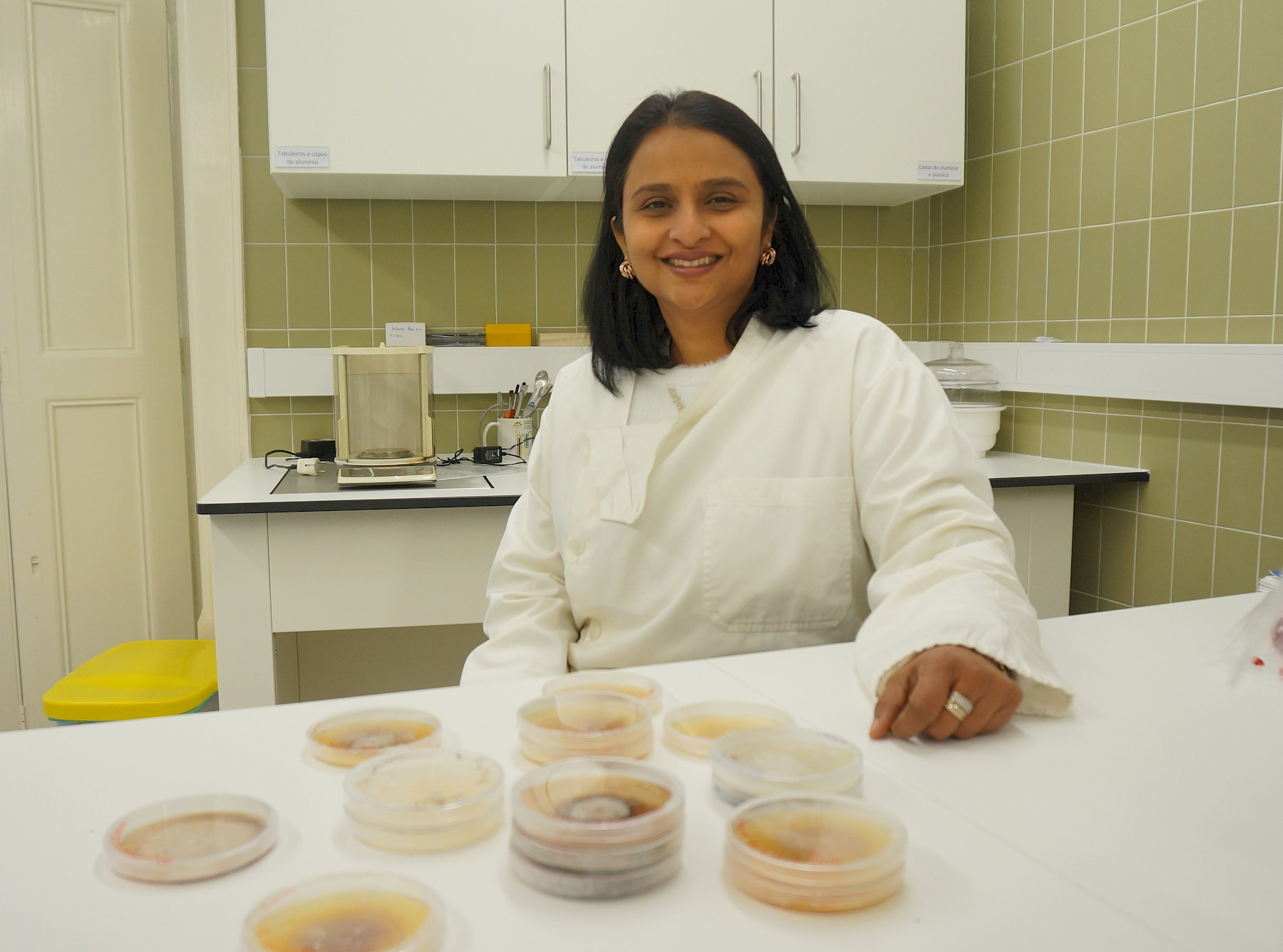Study shows that nanoplastics endanger freshwater ecosystems
The research provides new insights into the major risks that nanoplastics pose to normal life in freshwater ecosystems.
Translation by Diana Taborda
A team of scientists from the University of Coimbra (UC), in collaboration with the University of Aveiro (UC) and Konkuk University (South Korea) have identified the possible impact caused by low concentration of nanoplastics in freshwater ecosystems and concluded that environmentally relevant concentrations of nanoplastics pose a major risk to the basal trophic levels of food chains in small forested streams.
The study has already been published in the "Journal of Hazardous Materials". The team conducted a laboratory test "with the lowest concentrations of nanoplastics ever tested, up to 25 μg/L [microgrammes per litre], with two sizes (100 and 1000 nm [nanometres]). The goal was to assess the impact of nanoplastics on the activity (decomposition of organic matter), reproduction rate and changes in the community of aquatic hyphomycetes [fungi]. In addition, we checked the changes in the nutritional quality of leaf litter exposed to nanoplastics. These leaves were then fed to a species of stream invertebrates, in order to evaluate possible consequences on their feeding behaviour," explains Seena Sahadevan, researcher at the Marine and Environmental Sciences Centre (MARE) of the Faculty of Sciences and Technology of the University of Coimbra (FCTUC) and first author of the scientific article.
In small streams, the decomposition of organic matter is a crucial process, responsible for the transfer of energy and nutrients among the different trophic levels of the food chain. Aquatic hyphomycetes are the main mediators of that process. These fungi are able to modify the recalcitrant components in the leaf, thus improving their palatability and nutritional quality for consumption by invertebrates.
According to the MARE researcher, the results obtained show that “decomposition, reproduction and abundance of fungi are significantly affected by low concentration and size of nanoparticles. Smaller size particles show more toxicity.” Seena Sahadevan adds that “Interestingly, only lower size nanoplastics had an impact on the nutritional quality of leaf litter, increasing the amount of polyunsaturated fatty acids. There were no visible changes in the feeding rates of invertebrates, although we have observed a lethargic behaviour in animals fed on leaves exposed to higher concentrations, indicating possible contamination.”
Nanoplastics are fragments of plastic smaller than 1000 nm (nanometres) - roughly the size of a virus - generally used by the pharmaceutical, cosmetics and cleaning product industries, and can also be derived from the degradation of the macro-plastics we use in our daily lives.
The main concern with these nanometric plastic fragments is their high capacity to interact and react with other molecules and organisms present in the environment. Currently, the vast majority of studies addressing "the consequences of micro and nanoplastics in nature are conducted in marine environments. However, it is important to note that 1.15 - 2.41 million tonnes of the plastics present in the oceans are transported via rivers," claim the authors of the study.
On the whole, this study provides “novel insights on the major risks that nanoplastics present to normal life in freshwater ecosystems”, summarizes Seena Sahadevan.
The scientific article is available here.

